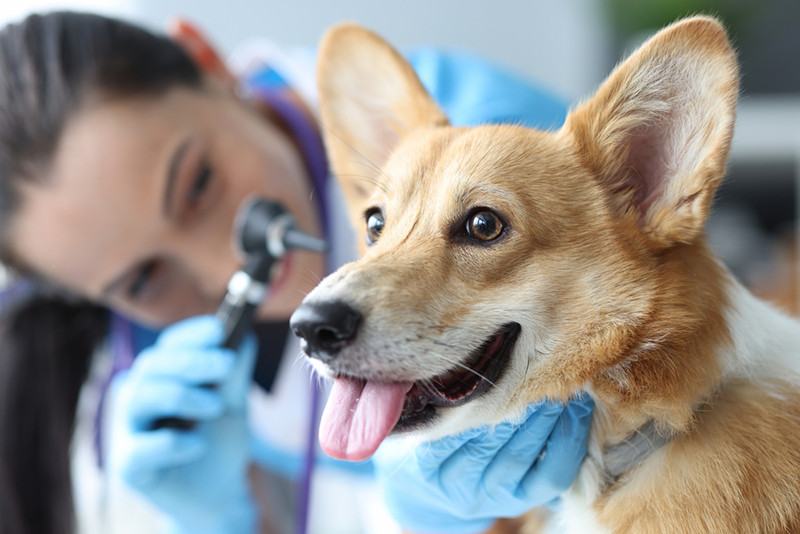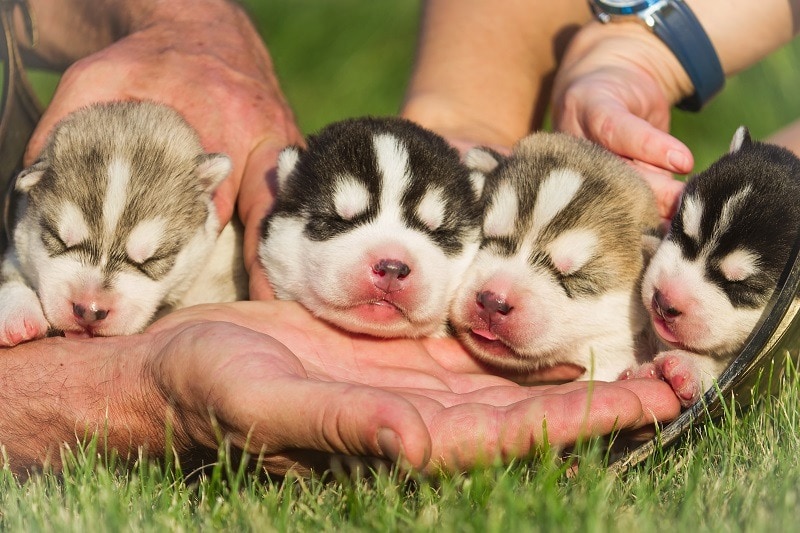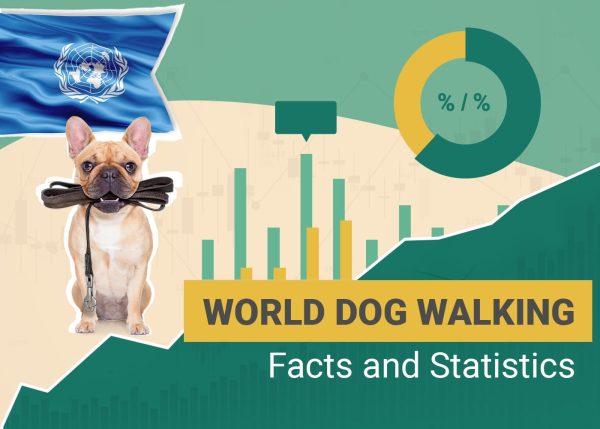In this article
View 2 More +Breeding your dog and having adorable puppies running around is a real joy and a wonderful experience for children. That said, it is also a massive responsibility and needs careful planning, preparation, and commitment. For a dog that is young and healthy, the process should be smooth and easy, but for dogs that have health issues or simply are not ready, the process can become expensive and potentially, disastrous.
It’s important to note that breeding puppies can result in a hefty vet bill, even when the parents and puppies are healthy. There is extra food, health checks, and vaccinations to think about, and these costs can all add up. However, the most important factor to take into consideration is the health of your dog and whether they can or should breed.
In this article, we take you through the various steps that you need to consider as to whether your pooch is fit for breeding. Let’s get started!

Before You Start
The most important consideration before deciding to breed puppies is an evaluation of both the parent dogs that you are considering breeding. In essence, the new litter should be a continuation or an improvement of the health of the parents, and you should carefully consider the temperament and health of the dogs that you are thinking about breeding.
The puppies that you bring into the world are a huge responsibility, and you’ll want to make sure you have the time, money, and space to raise them. Additionally, there are thousands of dogs looking for homes in the United States, and the last thing that you want is to add to this list. It’s a good idea to make sure you have good homes for the puppies before breeding too.

What Are Your Reasons for Breeding?
Do you want another dog like the one you have? Do you have a pedigree animal that you wish to breed to make extra money? Or do you simply want to have adorable puppies to look after and experience with your children? While these are all valid reasons, the puppies will never look or have the same personality as the parents, as there is a variety of contributing factors.
Also, while pedigree puppies can sell for high prices, breeding is an expensive undertaking, and you may not make as much money back as you might hope. There are always risks with breeding your dog, especially pedigree animals, and this is why it’s often best left to professional breeders.
That said, a healthy pair of dogs can breed successfully with few problems if all the necessary precautions are taken. Let’s look at the steps to take before breeding your dog and how to see if they are fit for breeding.

The 3 Steps to See if a Dog Is Fit for Breeding:
1. Get a Thorough Health Evaluation from a Veterinarian
The first and most important step is a thorough health evaluation from a vet. This will take into consideration your dog’s age, health, and size. Your vet can help you make the right decision for your pooch.
Females
Try to take your female for a checkup at least a few weeks before the heat cycle in which you intend to breed her. Your vet will check her general health, make sure her vaccines are up to date, check that she is free from parasites, fleas, and ticks, and make sure there are no orthopedic issues.
She should also not be over- or under-weight and should be on a high-quality diet before you begin breeding. Also, she should not be on any medication, as these can result in birth defects; even simple nutritional supplements can be dangerous.
Females should also have whelped fewer than four litters previously, as any more than this may cause problems. Most females can easily have up to six to seven litters in their lifetime, but most breeders feel that this is too much. Females that have had two cesarean sections are also at high risk during pregnancy and are not safe to breed again. Also, it goes without saying that females should never be bred with a father or brother.
Males
Males need to go through the same basic check-up process as females. They’ll need to be in good overall health, up to date on vaccines, and free from parasites and undergo thorough genetic screening to make sure there are no genetic health issues that can potentially be passed on to the puppies.

2. Consider Their Age
Age is a vital factor to take into consideration before breeding, especially for the female. She should be at least 1 year old, and have already gone through one heat cycle (preferably two) before breeding. The female should also not be too old. The maximum age of breeding can vary between breeds, but a general rule of thumb is that any females older than 7–8 years will increase the risk of mating and whelping and potentially result in complications, even if she is in good general health.
In theory, males can breed safely until old age, although most breeding clubs recommend 10 years old as a good age to retire males. It’s also important to note that older males may have lower sperm counts, and this may result in a failed pregnancy. Most breeders recommend 2 years as the minimum age to breed pedigree males, as you cannot get them Orthopedic Foundation for Animals certified earlier than this, which may result in puppies with hip issues.
3. Things to Know When Choosing a Male
The male that you choose to breed with your female should have a clean bill of health, be compatible in size and temperament with your female, and ideally, be the same breed. That said, crossbreeding can be great, as it can produce beautiful hybrids, such as Labradoodles and Cockapoos, and can also make for a healthier animal overall.
The most important consideration is size. You’ll want the male to be the same or a similar size as your female to prevent issues during the birthing process. This is why we recommend pedigree males, as the puppies of crossbred males can be difficult to predict unless you are sure of the parent breeds.
Temperament is another vital consideration. Although it is largely influenced by the way that your dog is raised and the environment that they are brought up in, temperament is, in large part, an inherited trait, and both the parent’s temperaments will impact the temperaments of the puppies.
- Related article: How to Know a Dog is Ready to Mate
If you’re uncertain about whether your dog is fit for breeding, consult a veterinarian for guidance.

Final Considerations Before Breeding
Breeding puppies is a time-consuming and expensive undertaking and requires careful planning beforehand. Once you have confirmed that your dog is fit for breeding, there are final points to consider before taking the plunge. You need to be sure that you have the following in abundance.
Time
During pregnancy, your dog needs plenty of extra care and attention, and she’ll need to be taken for regular checks with the vet and be fed more regularly. During whelping, she’ll need extra food, attention, and care, as will the puppies. This will take up a great deal of your time, and you need to make sure you can take care of the mom’s needs, as well as those of four to eight newborn puppies!
If you’ve ever taken care of puppies before, you’ll know how much mess they are capable of making!
Money
Your dog will need to undergo important tests to make sure she is fit for breeding. Once she’s pregnant and whelping, she’ll be eating at least double her usual amount of food. There’ll also be a litter of puppies to feed several times a day, and the costs can quickly add up! While it’s not something that you want to imagine, there can be complications during birthing, and your dog may need a C-section or assisted birth, which can be quite expensive.

Preparation and Knowledge
Females are amazing mothers and have an innate knowledge and intuition about the birthing and whelping process that is incredible to watch. That said, you’ll need to be there to support your dog, know when something is wrong, and be ready when she’s about to go into labor.
Whelping can also get complicated at times, with puppies not feeding and issues like blocked ducts in the mother’s nipples that can quickly get painful. Helping the mother wean puppies and get them socialized is also a wonderful but stressful process, and it’s important to get yourself prepared and educated about all these factors before they come up.
See also:
Featured Image Credit: S Curtis, Shutterstock




















